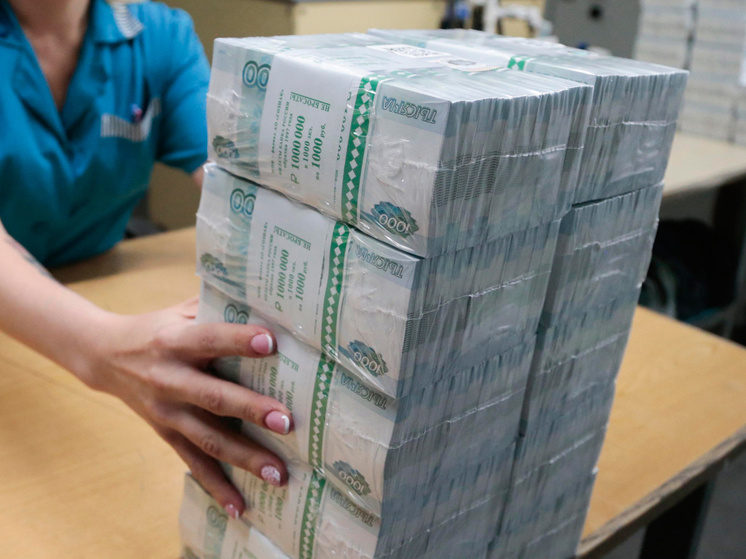«This is not a barrel of money doomed to exhaustion»
With the current dynamics of budget spending, Russia will exhaust the reserves accumulated in the 2010s in five years, writes The Economist. The British publication supports this bold thesis with many arguments, most of them lengthy. However, according to domestic experts, whose opinions MK found out, today's forecasting horizons — both in Russia and in the world — are so narrowed that they deprive such conclusions of any practical meaning.

Despite the critical nature of the conclusions for Russia, the article by the British publication contains many quite complimentary notes. As The Economist notes, despite harsh sanctions and pariah status, the Russian economy is accelerating, unemployment is close to a record low, and the ruble is doing well. True, inflation is significantly higher than the Central Bank's target of 4%, but with the growth of cash income, the purchasing power of Russians is also growing rapidly. By the end of 2024, real GDP growth is expected to be at 3.6%, which significantly exceeds the forecast for the vast majority of Western countries. The Russian government is actively spending money on social benefits, programs to subsidize lending for the population and businesses at low interest rates, and significant infrastructure projects, such as, for example, new highways between major cities.
At the same time, Russia is expecting a budget deficit of 2% of GDP this year – by its standards, this is a lot – and the authorities are planning to finance it mainly “at the expense of the huge reserves accumulated back in the 2010s.” However, this money will last for a maximum of five years. As The Economist writes, the volume of unsecured consumer lending, and with it, effective demand, is growing by leaps and bounds, and this clearly limits the effectiveness of tightening monetary policy to combat inflation. Things are not going well with exports: in the first quarter, their total value in dollar terms was 4% lower than in the same period of 2023, and a full third lower than in 2022.
“The Economist’s thesis sounds alarming, but it is worth noting several important nuances,” says Artem Deev, head of the analytical department at AMarkets. – The publication does not provide specific figures on the size of resources and the dynamics of their use. This does not allow us to assess the correctness of the forecast. It is also important to understand: Russia is under sanctions, which forces the economy to rebuild in new conditions. The Russian government may take measures to reduce budget expenditures or search for new sources of income. Or oil prices will rise. Accordingly, different scenarios for the development of the situation are possible.”
The calculations of the British magazine do not stand up to criticism, says Alexander Shneiderman, head of the sales and customer support department at Alfa-Forex. According to him, the authors took the current expenditure items of the Russian treasury and tried to determine their safety margin taking into account the funds of the National Welfare Fund. The result was five years. But Russia's reserves are not a «barrel of money» doomed to exhaustion. The National Welfare Fund continues to be replenished by income received in excess of the planned amount from the sale of natural resources abroad. The funds are used to implement large-scale infrastructure projects, when billions of dollars are required at one time. The National Welfare Fund is a convenient tool for this type of financing.
«In addition,» continues Shneiderman, «it is incorrect to interpret budget expenditures on infrastructure (including transport) as irrecoverable losses. We are talking about investments with a more or less close payback period. Thanks to interchanges and good-quality roads, passenger and freight traffic accelerates, distances are covered faster and safer, domestic tourism grows, citizens spend less time on the road to work, and mobility increases. Such projects pay off within a few years and begin to bring profit to the budget of the country and the regions.»
«We are all living in an era of extreme uncertainty, the forecasting horizon is limited to one, maximum two years. And here — five years at once,» notes Igor Nikolaev, chief researcher at the Institute of Economics of the Russian Academy of Sciences. «In Russia, the budget impulse will almost certainly continue into 2025 — due to a tightening of tax policy, in particular — due to an increase in the profit tax rate. According to estimates, this will provide the budget with an increase of 2.6 trillion rubles. But then a lot will depend on the general state of the economy, on the foreign economic situation, on the dynamics of export earnings. So I would be careful with far-reaching conclusions.»
The Economist assumes that the National Welfare Fund will be used to cover the budget deficit. But it is also possible to borrow on the debt market, essentially endlessly. Our accumulated public debt is about 15% of GDP, while in European countries it is on average 80%, says Alexey Zubets, professor at the Financial University under the Government of the Russian Federation. For Russia, the main problem is inflation: a huge amount of money is being poured into the economy, and few goods are being produced to meet demand. However, inflation can be contained, for example, by forcing construction companies to reduce real estate prices. Today, according to Rosstat, the market price per square meter is 160 thousand, and the cost of its construction is about 60 thousand.
“That is, cheaper housing can be used as a pump that will suck in excess money supply. Simply put, people will go buy apartments. High interest rates on deposits also play the role of such a pump today. “And the thesis about five years is meaningless,” Zubets sums up, “during this time, other sources of financing will definitely be found in Russia.”


